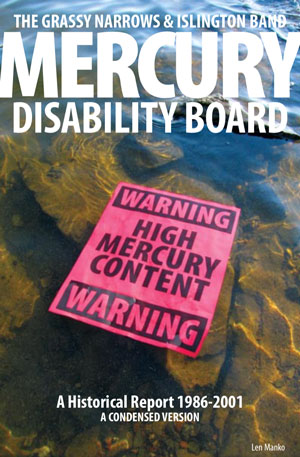In 1976, 1977 and 1979 a panel of experts conducted medical studies at Grassy Narrows First Nation and Wabaseemoong Independent Nation. As a result, these medical experts developed a grading system used even now as grading guidelines to determine whether or not, and to what degree, claimants would qualify for compensation. According to this grading system, or protocol, a 0 score indicates no evidence of mercury intoxication, 3 indicates certain organic mercury intoxication.
Persons of all ages were examined. In 1976, for example, 47.7% were neurologically abnormal, that is there was some brain or nervous system damage. The maximum score was not assigned to any participant in the study in either community. Once various abnormalities were determined, it was found that 16 residents of the Wabaseemoong Independent Nation and 12 residents of the Grassy Narrows First Nation were “assessed as having neurological abnormalities compatible with mercury intoxication.”
As a result of these studies, an adult neuro assessment protocol was established. This ‘guideline’ pointed to 7 different categories of symptoms. For example, tremor, or shaking was one, incoordination was another. A four-level scale was used: none, mild, moderate and severe, to determine how serious the condition was. Number values were also added to help with the grading system; 0-mild to 8, severe.
A separate protocol was established for children. Initially, there were only 2 categories, cerebral palsy and mental retardation. Later they were revised into seven categories. Mild, moderate and severe were adopted as guidelines of severity. The number system for grading adult cases was also adopted. IQ, or intelligence tests, were used in the diagnosis. There was a concern, however, that some of the children would have difficulty understanding the words used in the tests.
Current adult guidelines are the ones recommended for use in 1985.

